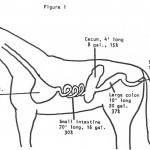![Mare_and_foal_Kvetina-Marie[1]](http://www.thehorsegal.com/wp-content/uploads/2010/07/Mare_and_foal_Kvetina-Marie1-300x226.jpg) It’s true that mother knows best, but a little human help doesn’t hurt either. Since Dr. Robert Miller introduced foal imprinting about 20 years ago, breeders, trainers, and owners have embraced this hands-on approach credited with producing more manageable, more trusting, and easier to train horses.
It’s true that mother knows best, but a little human help doesn’t hurt either. Since Dr. Robert Miller introduced foal imprinting about 20 years ago, breeders, trainers, and owners have embraced this hands-on approach credited with producing more manageable, more trusting, and easier to train horses.
What exactly is foal imprinting? In a nutshell, it is desensitizing the foal to human interaction immediately upon birth. During imprinting the foal is handled by humans before its fight-or-flight instinct kicks in. There are two goals with imprinting: to train a horse to have little or no resistance to veterinary, farrier, and training procedures; and to establish a human dominance in the young foal’s life, leading to a more willing and trainable adult horse.
What does foal imprinting consist of? Immediately following birth, a handler gently probes the baby’s gums, teeth, ears, mouth, nose, and rectum. He or she handles the foal’s feet, applies gentle pressure to the sides and back, and introduces it to distracting sounds like the vibration of clippers, the sounds of crinkling paper, and flapping plastic. The goal is to get the foal to experience sensations it will experience throughout its life, and accept them at the earliest stage.
When is the right time to begin imprint training. Most people begin to imprint train their foal about one hour after birth, right after the foal has stood and nursed. Begin by touching the horse’s body very gently, all over. This will help the foal learn that he can be touched anywhere and it won’t hurt. And best of all, this is a lesson the horse will carry with him throughout his life! Foals who have been touched in this manner shortly after birth learn not to move into or jump away from pressure on their bodies.
One thing that is very important to note. Take care not to desensitize the area around the foal’s sides. You want to preserve sensitivity to the rider’s cues in that area! However, you do want them to understand that they should move away from pressure. You can do this by tapping them until they move. When they finally do move, stop tapping. By teaching the foal the concept of moving away from pressure early on, saddle training will be a breeze later on down the road!
Imprinting is also a great way to get your foal ready for a lifetime of easy farriery. What’s the best way to do this? Pick up and handle each foot. Be sure to lightly tap the hoof and sole with a pick. By doing this, you’ll prepare the foal for foot handling, hoof picking, and other aspects of hoof care it will encounter during its adult life.
To help the foal accept things like accepting the bit, veterinary procedures, teeth floating, and deworming, make sure you pay attention to the baby’s mouth during the imprinting process. Put your fingers in both the mouth and the nose, being sure to feel around the gums and pull the lips back. Desensitizing the mouth will ensure that you foal remains a model patient–one that your vet and dentist enjoy working with–through adulthood.
During imprinting, make sure you only touch one part of the body at a time. Continue to touch that part of the body until the foal accepts what you are doing. Never quit while the foal is resisting! To do so only teaches the horse that resistance leads to you stopping. And that’s not a lesson you want any horse to learn!
Initial imprinting takes about an hour. Over the next 12 hours, do two more five- or 10-minute imprinting sessions. A 10-minute session done once or twice a day thereafter will ensure your horse stays up to speed.
By introducing your young foal to varied stimuli, you can instill a lifetime of trust and willingness!

 Question: What is the most important nutrient for a horse?
Question: What is the most important nutrient for a horse?